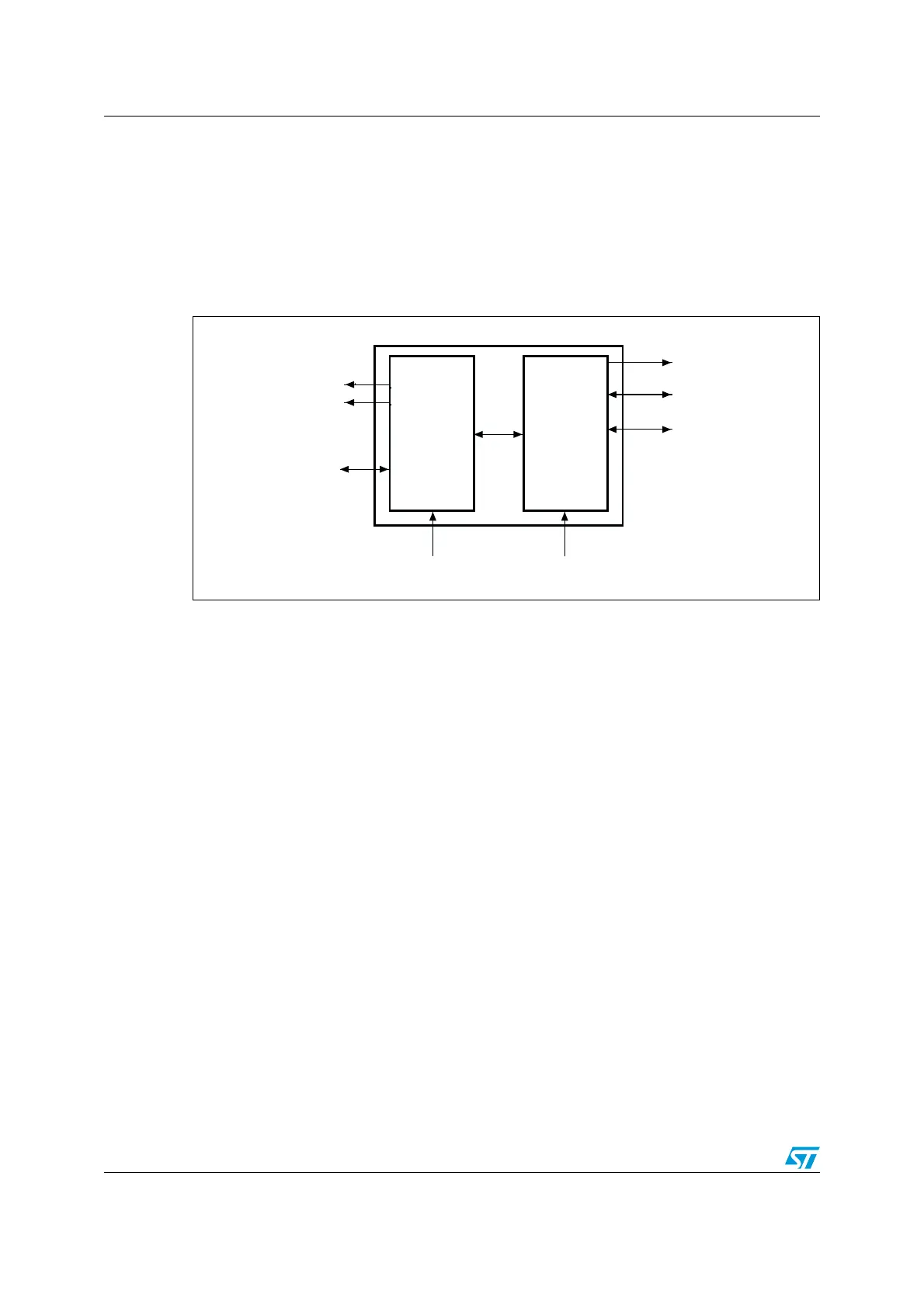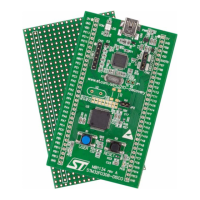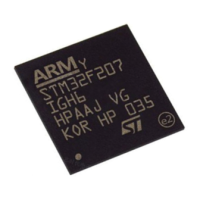Secure digital input/output interface (SDIO) RM0008
546/1096 Doc ID 13902 Rev 12
22.3 SDIO functional description
The SDIO consists of two parts:
● The SDIO adapter block provides all functions specific to the MMC/SD/SD I/O card
such as the clock generation unit, command and data transfer.
● The AHB interface accesses the SDIO adapter registers, and generates interrupt and
DMA request signals.
Figure 211. SDIO block diagram
By default SDIO_D0 is used for data transfer. After initialization, the host can change the
databus width.
If a MultiMediaCard is connected to the bus, SDIO_D0, SDIO_D[3:0] or SDIO_D[7:0] can be
used for data transfer. MMC V3.31 or previous, supports only 1 bit of data so only SDIO_D0
can be used.
If an SD or SD I/O card is connected to the bus, data transfer can be configured by the host
to use SDIO_D0 or SDIO_D[3:0]. All data lines are operating in push-pull mode.
SDIO_CMD has two operational modes:
● Open-drain for initialization (only for MMCV3.31 or previous)
● Push-pull for command transfer (SD/SD I/O card MMC4.2 use push-pull drivers also for
initialization)
SDIO_CK is the clock to the card: one bit is transferred on both command and data lines
with each clock cycle. The clock frequency can vary between 0 MHz and 20 MHz (for a
MultiMediaCard V3.31), between 0 and 48 MHz for a MultiMediaCard V4.0/4.2, or between
0 and 25 MHz (for an SD/SD I/O card).
The SDIO uses two clock signals:
● SDIO adapter clock (SDIOCLK = HCLK)
● AHB bus clock (HCLK/2)
PCLK2 and SDIO_CK clock frequencies must respect the following condition:
The signals shown in Ta bl e 1 36 are used on the MultiMediaCard/SD/SD I/O card bus.
AHB bus
AHB
Interrupts and
HCLK/2
SDIO_CK
adapter
interface
DMA request
SDIOCLK
SDIO
SDIO
SDIO_D[7:0]
SDIO_CMD
ai14740
Frequenc PCLK2()38⁄ Frequency SDIO_CK()×=

